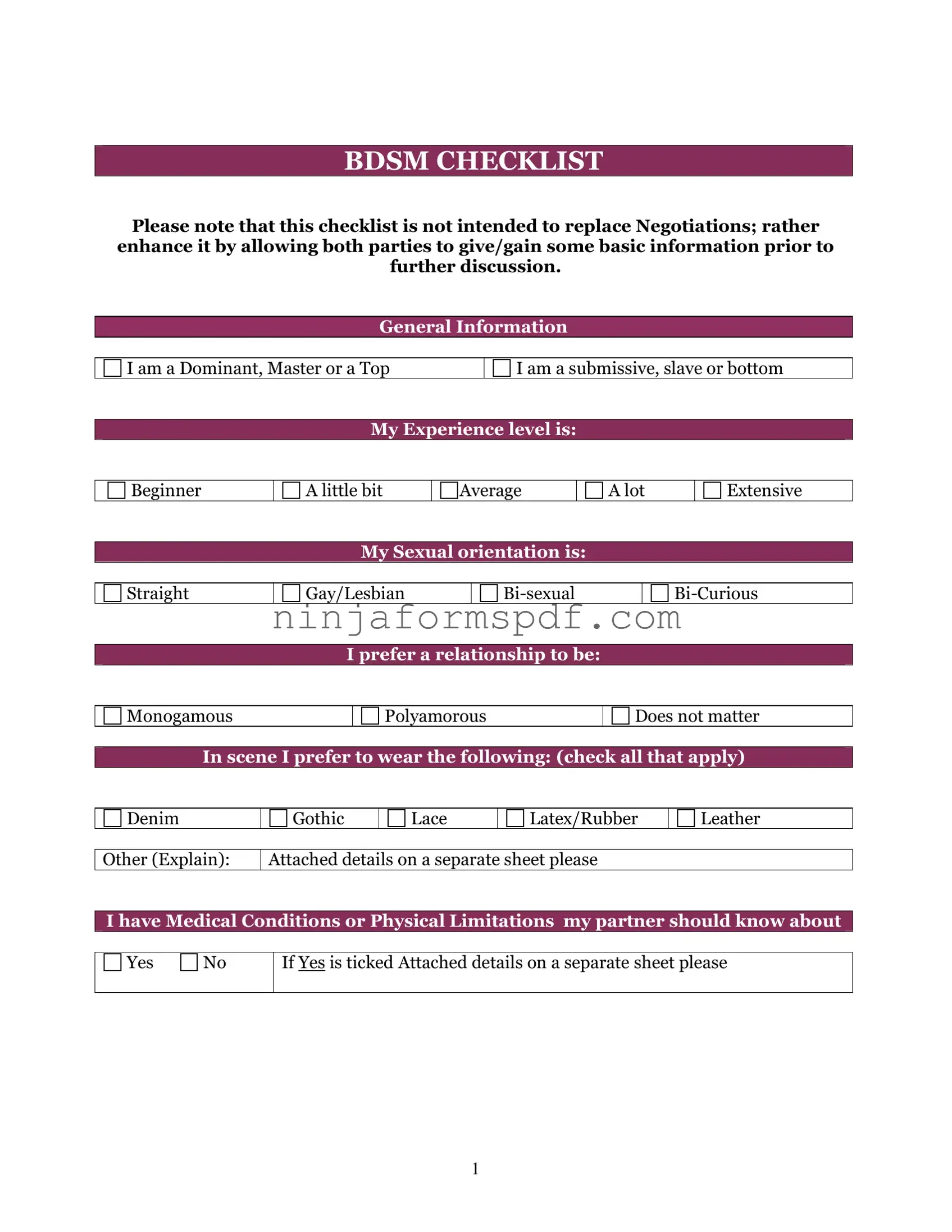The BDSM Checklist form, used for outlining preferences and limits within BDSM activities, shares similarities with various other forms and documents that also structure or record preferences, consent, or agreements between parties. One such document is the Sexual Consent Form. This form is designed to establish explicit consent between individuals before engaging in sexual activities, ensuring all parties are informed and agreeable to the acts discussed. Like the BDSM Checklist, it emphasizes clear communication and consent, although the Sexual Consent Form is more general in nature.
Another related document is the Living Will, known also as an advance directive. This legal document allows individuals to outline their wishes regarding medical treatment in situations where they are not able to communicate their decisions. While seemingly different, both documents share the intent of reflecting personal preferences and ensuring they are respected, particularly in sensitive or potentially vulnerable situations.
A Medical History Form also bears resemblance to the BDSM Checklist in that it documents an individual's health background for medical professionals. The BDSM Checklist, while not serving a medical function, similarly records personal information that is crucial for safety and well-being in the context of BDSM activities, focusing on what activities are safe or preferred based on past experiences or health concerns.
The Relationship Agreement, often detailed in nature, outlines the expectations and boundaries between partners in a romantic relationship. Similar to the BDSM Checklist, this document is a tool for communication and ensuring mutual understanding and respect for each partner's boundaries and desires, making the agreement tailored and specific to the individuals involved.
A Contract of Employment shares similarities with the BDSM Checklist by formalizing the terms of an agreement between an employer and an employee, detailing roles, responsibilities, and boundaries in a professional context. Both documents serve to create a clear understanding between parties to prevent future disagreements and ensure a harmonious relationship.
The Tenant Agreement, which lays out the terms and conditions between a landlord and a tenant, also parallels the BDSM Checklist. It ensures both parties are aware and in agreement of the conditions under which the property will be rented, including what is permissible within the property. The BDSM Checklist functions similarly by establishing the boundaries and acts that are acceptable within the context of BDSM scenes.
Privacy Policies, often found on websites, detail how an organization will collect, use, and protect a user's personal information. Like the BDSM Checklist, these documents aim to make clear the extent of consent regarding how personal information is handled, even though the BDSM Checklist focuses on physical and emotional boundaries rather than information security.
The Parental Consent Form for minors participating in activities highlights another facet of consent and agreement documentation. This form is required for minors to participate in certain activities, ensuring parents or guardians are informed and agree to the terms and conditions. Similar to the BDSM Checklist, it's a preventive measure designed to safeguard against activities that may not be suitable or safe for all parties involved without informed consent.






